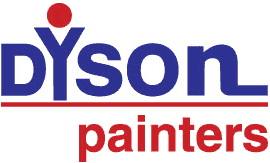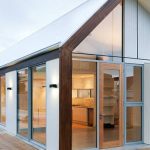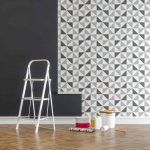When it comes to revamping the aesthetic appeal of your property, whether it’s a residential haven or a commercial hub, choosing the right painting technique is crucial. Among the various methods available, air and airless spray painting stand out as popular choices, each with its unique set of advantages and applications. In this article, we delve into the differences between these two techniques to help you make an informed decision for your painting project.
Air vs Airless Spray Painting?
Both air and airless spray painting techniques are widely used in the painting industry, but they differ significantly in their application and the results they achieve.
What is Air Spray Painting?
Air spray painting, also known as conventional spray painting, relies on compressed air to atomise the paint into tiny droplets. A specialised spray gun is used to deliver a fine mist of paint onto the surface being coated. This method offers excellent control over the paint flow and pattern, making it ideal for intricate detailing and achieving a smooth, even finish.
In air spray painting, the paint is mixed with compressed air in the spray gun nozzle, creating a mist that is then directed onto the surface. This process allows for precise adjustments to the spray pattern and paint flow, giving painters the flexibility to achieve various textures and effects.
While this type offers versatility and precision, it does have some limitations. It tends to produce more overspray compared to airless spray painting, leading to potential wastage of paint and increased cleanup efforts. Additionally, air spray may not be as efficient for covering large surface areas quickly, making it more suitable for smaller projects or areas that require intricate detailing.
What is an Airless Spray Painting?
Airless spray painting, on the other hand, operates without the use of compressed air. Instead, it relies on a high-pressure pump to force the paint through a small nozzle, atomising it into tiny droplets as it is sprayed onto the surface. This method is particularly well-suited for covering large areas quickly and efficiently, making it ideal for residential and commercial painting projects.
In airless spray painting, the high-pressure pump delivers paint directly from the container to the spray gun, eliminating the need for compressed air. This results in a more uniform application of paint and reduces overspray, leading to higher efficiency and less wastage.
Difference Between Air vs Airless Spray Painting
Transfer Efficiency
Transfer efficiency refers to the amount of paint that reaches the surface being coated, rather than being lost as overspray or wasted during the painting process. In this regard, airless spray painting typically boasts higher transfer efficiency compared to air spray. The high-pressure pump in airless systems ensures a more controlled and uniform application of paint, minimising wastage and maximising coverage.
Performance
Performance is another critical factor to consider when comparing air and airless spray painting techniques. While both methods can achieve excellent results, the latter tends to outperform in terms of speed and coverage. Airless systems can coat large surface areas quickly and efficiently, making them ideal for projects that require a fast turnaround time, such as commercial buildings or exterior surfaces.
Pressure
One of the primary distinctions between air and airless spray painting lies in the pressure used to atomise and deliver the paint. Air spray relies on compressed air to propel the paint onto the surface, allowing precise control over the spray pattern and paint flow. In contrast, an airless system utilises a high-pressure pump to force the paint through a small nozzle, resulting in a more uniform and powerful paint application.
Material Viscosity
Another factor to consider is the viscosity of the material being sprayed. Air spray painting is generally better suited for thinner paints and coatings, as the compressed air helps atomise the paint into fine droplets. On the other hand, airless spray painting can handle a wider range of viscosities, making it suitable for thicker materials such as latex paints and primers.
Safety
Safety is paramount in any painting project, and both techniques have their own set of considerations. Air spray may pose a higher risk of overspray and inhalation of airborne particles, requiring proper ventilation and personal protective equipment (PPE) for painters. Airless systems, while generally safer in terms of overspray, still require caution when handling high-pressure equipment and hazardous materials.
Finish Quality
The finish quality achieved with air and airless spray painting can vary depending on several factors, including technique, equipment, and surface preparation. Air sprayer offers excellent control over the spray pattern and texture, making it ideal for achieving smooth, even finishes and intricate detailing. An airless system, on the other hand, excels in covering large surface areas quickly and uniformly, resulting in a more consistent finish overall.
Application
The choice between air and airless sprayers ultimately depends on the specific requirements of your painting project. Air spray is well-suited for smaller projects or areas that require detailed work, such as trim, cabinets, or furniture. Airless spray is ideal for covering large surface areas quickly and efficiently, making it a preferred choice for exterior walls, fences, and commercial buildings.
Cost
Finally, cost is an important consideration when comparing air and airless spray painting techniques. While air spray equipment may be more affordable upfront, airless systems offer higher efficiency and productivity, potentially reducing labour costs and overall project expenses in the long run. Additionally, the faster application and increased coverage provided by airless sprayers can result in shorter project timelines and reduced downtime.
Book a Free Consultation Now!
Frequently Asked Questions About Air vs. Airless Spray Painting
Does an airless sprayer use more paint than a roller?
One common concern among property owners is the potential for increased paint consumption with airless spray painting compared to traditional methods like using a roller. In reality, airless spray often requires less paint than traditional methods. The high-pressure pump in airless systems allows for a more even and controlled application, reducing the need for multiple coats and minimising wastage. This efficiency can lead to cost savings and a quicker completion of your painting project.
Can you use a paint sprayer with an air compressor?
The compatibility of a paint sprayer with an air compressor depends on the type of sprayer. Air spray painting, which uses compressed air to atomise the paint, requires an air compressor for operation. On the other hand, airless spray painting does not use compressed air, relying instead on a high-pressure pump to propel the paint. Therefore, air compressors are not needed for airless spray, making it a more straightforward and versatile option.
Is it worth investing in airless spray painting?
The decision to invest in airless spray painting depends on the scale and nature of your painting project. For larger projects, such as painting the exterior of a house or a commercial building, the efficiency and speed of airless systems often make it a worthwhile investment. The reduced labour costs, faster application, and consistent finish contribute to long-term savings and superior results, especially when compared to traditional methods like brushing or rolling. Read here to learn more about airless spray painting.
Can you use airless sprayers without thinning paint?
One of the advantages of an airless sprayer is its ability to handle thicker paints without the need for thinning. Traditional air spray painting may require thinning the paint to achieve proper atomisation, but airless systems can handle a broader range of material viscosities. This makes them a convenient option for those who prefer to use paints without altering their consistency.
Can I leave the paint in my sprayer overnight?
While it’s generally not recommended to leave paint in a sprayer overnight, airless spray painting systems offer more flexibility in this regard. Some models are equipped with features that allow for easy storage of unused paint in the sprayer for short periods, minimising cleanup efforts and making it convenient for multi-day projects. However, it’s essential to follow manufacturer guidelines and thoroughly clean the sprayer after completing the project to ensure optimal performance.
Can you paint a house with an airless sprayer?
Absolutely. Airless residential paint sprayers are highly suitable for interior and exterior painting houses. The efficiency and speed of these systems make them an excellent choice for covering large surface areas with a consistent finish. Whether you’re looking to refresh the interior walls of your home or give the exterior a vibrant new look, airless spray painting can deliver professional results efficiently.
What is the main difference between an airless spray gun and an air spray gun?
The key difference lies in how each system atomizes the paint. An airless spray gun uses high pressure (typically between 1,500 to 3,000 PSI) to push paint through a small nozzle, creating a fine spray without the use of compressed air. This makes it ideal for large surfaces where speed and coverage are priorities. On the other hand, an air spray gun (also known as a conventional or HVLP sprayer) uses compressed air to atomize paint, offering more control and a finer finish. However, air sprayers usually require more prep time and may result in more overspray and longer application time compared to airless models.
Is an airless paint sprayer better for exterior or interior painting?
An airless paint sprayer is exceptionally effective for exterior painting projects, such as siding, fences, and decks, due to its ability to quickly cover large, rough, or textured surfaces. Its high-pressure mechanism ensures consistent and even coats across wide areas. However, it’s also suitable for interior painting—especially in new constructions or large open rooms—where speed is important. For detailed interior work like trim or cabinetry, an air sprayer or brush may offer more precision. Overall, the choice depends on the size, location, and desired finish of the painting task.
Which spray method causes more overspray: airless or air spray?
In general, airless spray systems tend to produce more overspray compared to traditional air spray systems. This is because the high pressure used in airless sprayers can cause paint particles to disperse widely, especially if the wrong tip size or pressure setting is used. However, overspray can be minimized with proper technique, correct tip selection, and masking of nearby surfaces. Air spray guns, particularly HVLP (High Volume, Low Pressure) models, operate at lower pressures and are designed to reduce overspray, making them more suitable for detailed or indoor work where control is essential.
Get Expert Airless Spray Painting Services
Transform your property with precision and efficiency by choosing expert airless spray painting services from our renowned 50+ years old company. With decades of experience and a commitment to excellence, we pride ourselves on delivering flawless results that exceed expectations.
Experience the difference with our skilled team of professionals who utilise state-of-the-art equipment to ensure a smooth, uniform finish on every surface. Whether you’re a homeowner looking to revitalise your living space or a business owner seeking to enhance your commercial property’s curb appeal, our tailored solutions cater to your unique needs.
Contact us at 0420-213-214 or email us at admin@dysonpainters.com.au today to schedule a consultation and discover why generations of clients trust us for their airless spray painting needs. Let’s bring your vision to life with unparalleled craftsmanship and quality.
Also Read:
Understanding the Functioning of Airless Spray Painting
Why Should You Choose Airless Spray Painting





